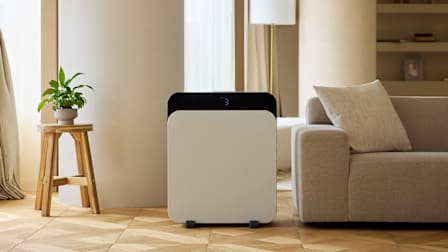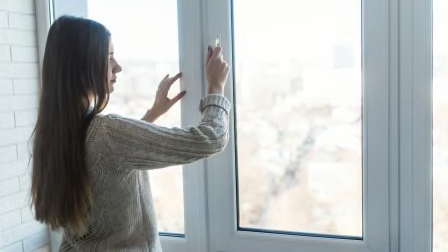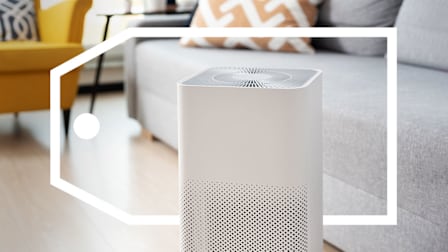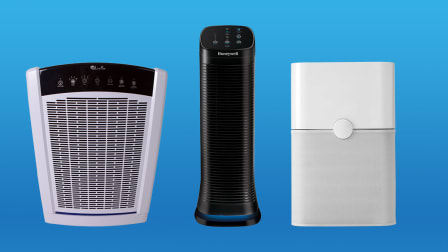Best Air Purifiers for a Home Office
Clearing the air in your workspace is good for your health and could even boost your productivity
When you shop through retailer links on our site, we may earn affiliate commissions. 100% of the fees we collect are used to support our nonprofit mission. Learn more.
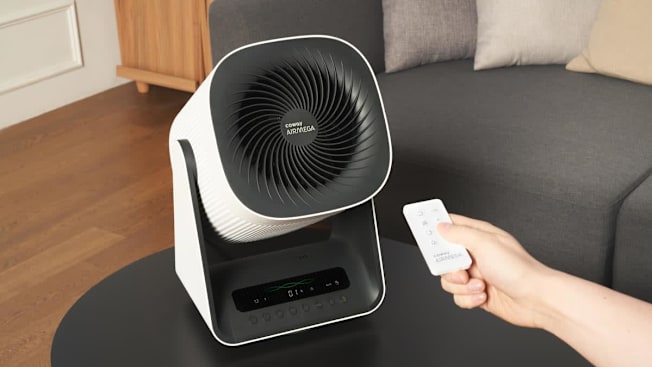
If you’re a remote worker, hybrid worker, or student, or you simply like a designated space for perusing the web, you should consider outfitting your home office with an air purifier. (Yes, the cloffice inside your bedroom counts too.)
“You may not have a lot of room to work with, so a smaller unit that can quietly clean the air is what you’ll need,” says Misha Kollontai, who oversees CR’s testing of air purifiers. “The last thing you want is a unit so loud that you’re trading air pollution for noise pollution.”
Because the office is a smaller space, we’re focusing on models for small rooms (150 square feet or less) and midsized rooms (150 to 350 square feet) that can effectively treat the average home office space. These models perform well at clearing the air of dust, pollen, and smoke at high and low speeds, and can save you some money. In fact, most of the models in this roundup come in at under $200.
Below are five air purifiers well-suited for an office. If your space happens to be bigger, you can read our roundup of the best air purifiers overall to find other top-rated picks that are suitable for larger rooms. To find out more about air purifiers and how we test them, see our air purifier buying guide. And learn how more than 160 models perform in our air purifier ratings.
The WiFi-enabled GermGuardian CDAP4500BCA is a smart air purifier that lets you control everything from your smartphone, or by voice using Amazon Alexa or Google Assistant. Best suited for tabletop or floor use in a small room measuring 150 square feet or less, it does a stellar job at removing dust, pollen, and smoke at both high and low speeds when used in rooms of this size. It is one of only two small-room air purifiers recommended by CR that receive an excellent score for noise on low speeds.
The machine has a programmable timer, a dirt sensor, five speeds, and a filter with a change indicator. One of this model’s biggest drawbacks, though, is its estimated $142 annual cost, with filter replacements and energy costs higher than most small air purifiers we test. Additionally, GermGuardian purifiers earned just so-so scores for predicted reliability and owner satisfaction in our latest member surveys.
This slim HEPA air purifier earns an excellent rating for removing dust, pollen, and smoke at high speeds and rates average at getting a large room of 350 to 650 square feet clean at lower speeds. In a home office of 150 square feet, expect top-notch performance, regardless of the setting. While the Honeywell Insight HPA5300B isn’t whisper-quiet—few air purifiers are—it’s among the quietest. Plus, because it’s equipped with an auto mode, you’ll rarely hear it running. It has an indicator light that lets you know when it’s time to change the filters (about once a year for the HEPA filter). There’s also a prefilter that needs to be replaced about every three months. The annual cost for filter replacements and energy use is $200 for this model. CR members give Honeywell air purifiers an average owner satisfaction score and a respectable score for predicted reliability.
Looking for relief in your attic office? The Dreo MC710S serves dual purposes as an air purifier and a tower fan. That functionality comes at a price of around $300—the most expensive in this roundup—but it delivers very good performance when running at low speeds and top-notch cleaning at high speeds. And though you’ll hear it running when set to high, the Dreo has an auto-mode, meaning you’ll rarely need that amount of power to keep your room particle-free. App compatibility, a remote control, and a programmable timer round out the bells and whistles on the MC710S. We estimate the annual cost for filter replacements and energy use is $95.
The Honeywell AirGenius 5 HFD-320 is one of the few models we test with a washable main filter, which saves you money because you don’t have to buy replacement HEPA filters. The machine, which has an estimated annual cost of only $83, is good at removing smoke and dust particles at its lower speed and does so with relatively low noise. It performs better in our particle reduction test at higher speeds, but expect a bit of noise with those results. Honeywell air purifiers received a so-so mark for owner satisfaction and an above-average score for predicted reliability in CR’s member surveys.
The Lasko LP200 is one of the least expensive models on CR’s roster of recommended air purifiers. Its annual costs are also relatively low: If you’re using it for a home office, expect to pay around $59 per year for filter replacement and electricity costs. The model does an excellent job at removing smoke and dust particles at a high speed, though our testers find it can be a bit noisy when doing so. It also showcases strong filtering performance when operating at lower speeds. In CR’s member surveys, Lasko air purifiers received an above-average mark for predicted reliability and a middling score for owner satisfaction.
How CR Tests Air Purifiers
To test air purifiers, we inject smoke and dust particles into a sealed chamber to assess how well each model removes particles between 0.1 and 1 micrometer. (Human hair has a diameter of roughly 100 micrometers.) Using a particle counter, we measure the change in particle concentration as the air purifier runs for 15 minutes at the highest speed and then at a lower speed. And because these machines are designed to run day and night, we measure noise levels in decibels at every speed and calculate annual operating costs for filter replacements and energy use to run the machine 24 hours a day.
In our air purifier ratings, we separate models by room designations from small to extra-large. Models within each room category size are judged against each other so that members can more readily evaluate air purifiers based on their room’s needs.
How Air Purifiers Can Boost Productivity
Several studies illustrate how breathing clean air can be good for not just your body but also your brain, such as one by the National Bureau of Economic Research that found worker productivity in a call center worsened while particulates were flying around.
“Even if your health isn’t compromised to the point where you need to take a day off from work, small changes in your well-being, like watery eyes, a runny nose, or a scratchy throat, can worsen your productivity,” says Matthew Neidell, the lead researcher of the aforementioned study and a professor of health policy and management at Columbia University in New York City.
Neidell says that improving your indoor air pollution by 50 to 80 percent—which we know is doable using an air purifier with a HEPA filter—would have a real impact. “You should certainly see people improving their productivity with drops like that,” he says.


































